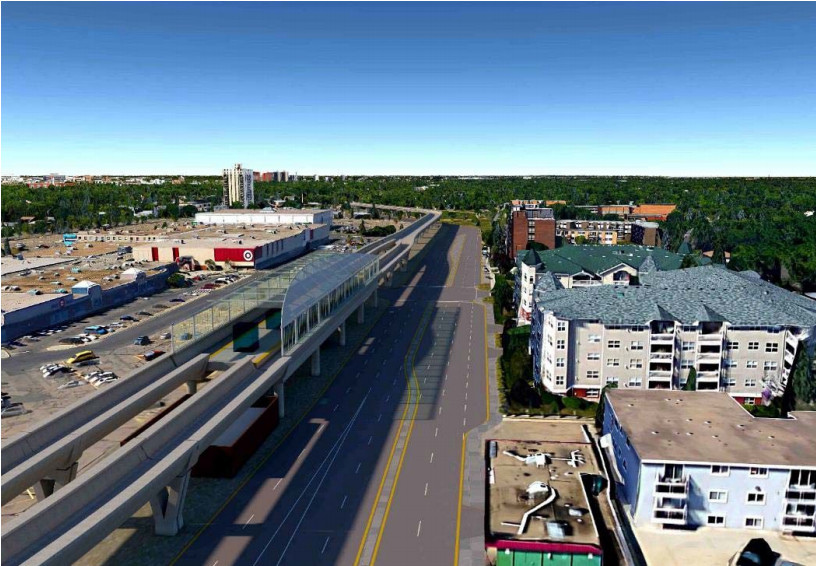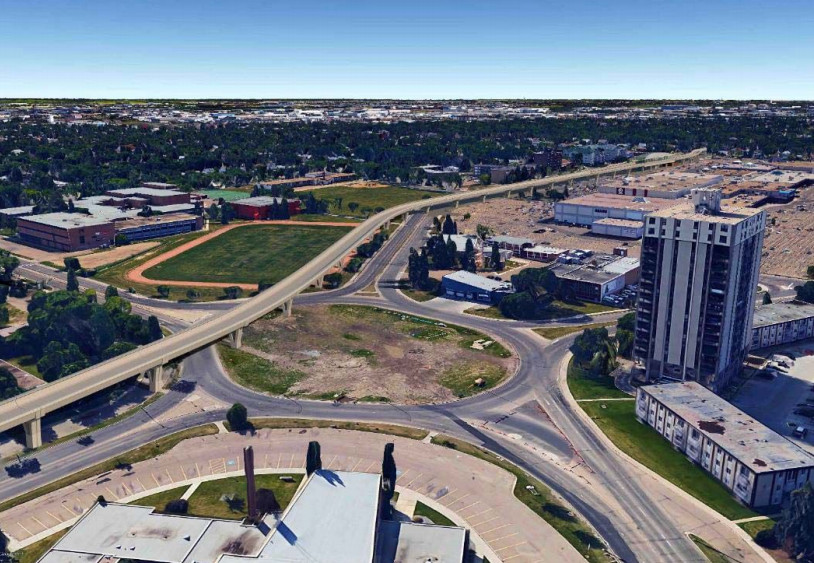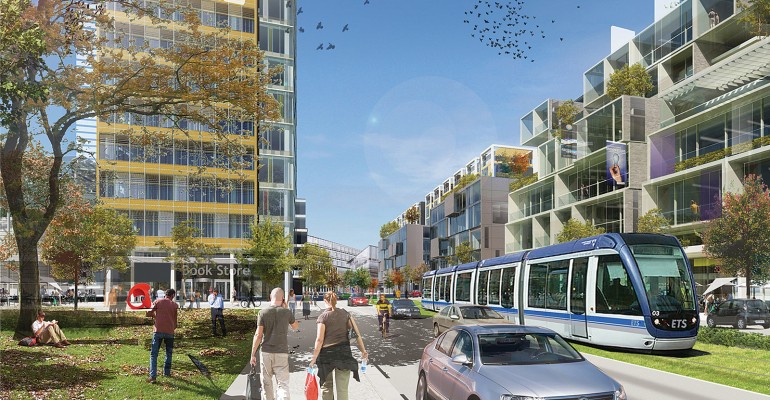A proposal will be coming to this weeks Executive Committee Meeting that looks at the opportunity for raising the Valley Line above grade for the entirety of the Bonnie Doon/Hollyrood area.
You can read the full report or view the renderings but I'll provide a quick summary:
At an estimated cost of $125-220 million, the Valley Line LRT would run on raised tracks from South of Whyte Avenue, to just north of 90th avenue (past the traffic circle). The additional work would delay the opening of the Valley Line by approximately six months.
Advantages
- Improves car traffic speed by 20-30 seconds at the Whyte Ave intersection in 2020, and by 30-40 seconds in 2050
- Keeps the traffic circle in place, increasing car speeds at 90ave by 30-40 seconds in both 2020 and 2050
- Reduces the total travel time of the LRT by around 3.5% (roughly one minute of total time from Mill Woods to Downtown)
However, the proposal comes with quite a few disadvantages as well.
Disadvantages
- Not consistent with design guidelines for an urban-style LRT
- Does not match aesthetic of the neighbourhood
- Significant additional cost
- Removes opportunities for Transit Oriented Development
- Requires more public engagement
- Delays opening by six months

Rendering of the Bonnie Doon Station, looking north
As you can see in the rendering, the new station is quite bulky, casts a large shadow and divides the neighbourhood. It looks quite out-of-character.

Rendering of the Traffic circle, looking southeast
Many people will jump and say go for it! without hesitation just from looking at that image of the traffic circle, and recalling hellish flashbacks of the Metro Line around Kingsway. I'd like to propose caution and suggest that this plan is not as appealing as it might initially seem.
The effect this proposal has on transit-oriented development is a big negative. The Bonnie Doon mall site, having recently lost the sears is a prime candidate for redevelopment. The LRT will be coming directly onto the mall site, so the potential for urban, transit-oriented development cannot be understated here.

Done right, transit-oriented development can look quite beautiful and functional
We chose the low-floor, urban-style LRT specifically to enable this type of development. The low-floor LRT is slower, and that was a compromise we made to enable these developments; to spend tonnes of money to ignore such a perfect candidate for redevelopment strikes me as an absurd waste.
In many cases we're talking about vehicle delays of less than a minute. These aren't the ten minute waits we saw with the Metro Line - and that's important to remember because the Valley Line is different than the Metro Line.
The Valley Line does not pre-empt traffic lights. It waits at red lights with the rest of traffic
This is the primary reason why vehicular traffic impact is so negligible compared to some of the other at-grade LRT crossings. At the Whyte Ave crossing, we don't stand to lose very much by keeping the LRT at-grade, but we have a lot to gain in potential development opportunities and neighbourhood cohesiveness.
However, the traffic circle is a different story. The traffic circle is a piece of infrastructure we will lose if we don't proceed with this plan (it will be replaced with lights, as a signalled intersection).
We should be encouraging questions about a partial implementation of this plan: what if we just raise the Valley Line above the traffic circle? It sounds like we can have our cake and eat it too. We get the benefits of new transit-oriented development, and we get to keep the traffic circle that many are very fond of.
We spent a lot of time getting the Valley Line design right(pdf). Let's stick to it rather than building a Sky Train. But we have the opportunity to keep the grassy, green-centred infrastructure that keeps traffic flowing, rather than replace it with slow asphalt and lights.
Let's not squander this opportunity.